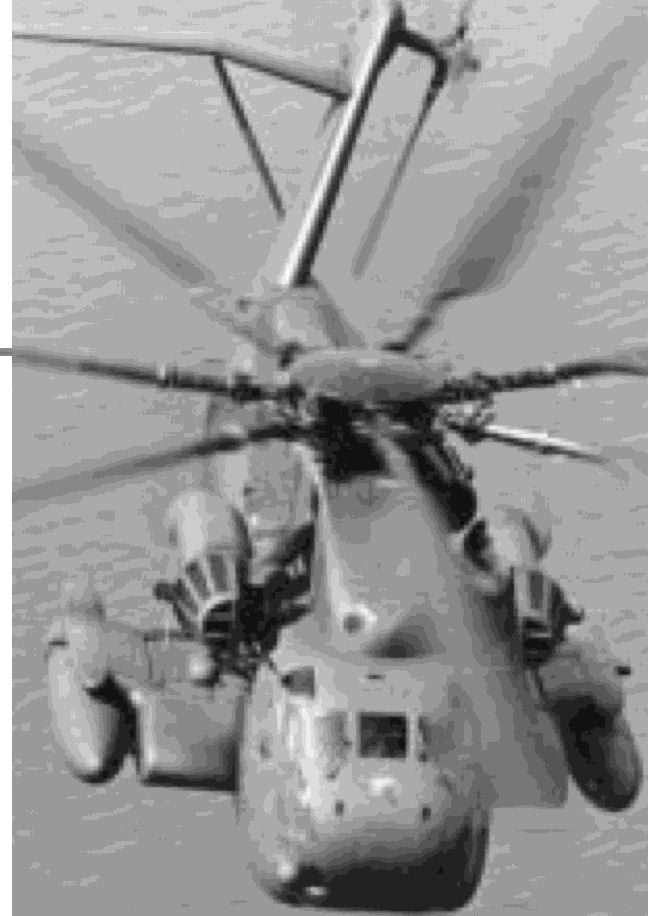
338
UNITED STATES NAVAL AVIATION
1910-1995
1982-Contin ued
dence on supplies of 100-percent imported natural
rubber. Potential military applications for guayule rub-
ber were aircraft tires, jet engine mounts, hydrophone
arrays, truck tires, tank treads, submarine acoustic tiles
and medical supplies.
1 October
Master Chief Avionics Technician Billy C.
Sanders assumed the duties of Master Chief Petty
Officer of the Navy. He was the second person with
an aviation background to hold the position since it
was established on 1 March 1967. Master Chief
Thomas S. Crow, who preceded Sanders, was the first.
1 October
Helicopter Tactical Wing One was estab-
lished at NAS Norfolk, Va. The new wing consisted of
HC-6, HC-16, HM-12, HM-14 and HM-16. It was
responsible for the administrative and operational
activities of these helicopter squadrons with regard to
training, material support and overall readiness.
Captain John W. Osberg was its first commander.
7 October
ARAPAHO at-sea testing was completed
at the Norfolk International Terminal, Norfolk, Va.,
when the 18,000-ton container ship Export Leader-
configured with a portable modular aviation facility-
returned to port after having logged 178 day and 45
night helicopter landings. ARAPAHO was a research
and development project to demonstrate the feasibility
of equipping merchant ships with emergency aviation
support in wartime and of operating ASW helicopters
and other combatant aircraft from these vessels.
16 October
Saratoga
conducted her first sea trials
since entering the shipyard as the first carrier to under-
go SLEP. She was completing the final phase of the
modernization and overhaul program.
28 October
The 30th anniversary of the first flight of
the A-3 Skywarrior, affectionately known as the Whale.
The aircraft had been in the fleet since 1956 and had
been used as a heavy bomber, radar trainer, electron-
ics reconnaissance platform, tanker, tanker-electronics
jammer, photoreconnaissance platform, dedicated
electronics jammer, airborne weapons test bed and
VIP transport.
11 November
The first operational flight of the
Space Shuttle
Columbia
was launched with astronauts
Vance D. Brand, Robert F. Overmyer, William B. Lenoir
and Joe P. Allen aboard. Astronauts Brand and
Overmyer were former Navy and Marine Corps avia-
tors, respectively. Lenoir and Allen were civilians. This
was the first time four astronauts were aboard the shut-
tIe for a flight. Previous test flights conducted by the
Space Shuttle
Columbia
carried only two astronauts.
15 December
Naval Aviation News
celebrated its
65th year of publication. The Navy's oldest periodical
in continuous print and one of the oldest aviation
magazines in the country, the magazine originally
began as a weekly bulletin published by the Chief of
Naval Operations.
1983
7
January
The first F/ A-18 Hornets entered opera-
tional service (excluding operational training
squadrons) with the Black Knights of VMFA-314,
replacing the F-4 Phantom II. This transition marked
the beginning of the replacement of F-4 and A-7 air-
craft with the Hornet.
21 January
HSL-41 was established with Comman-
der Michael B. O'Connor Jr., as the Seahawks' first
commanding officer. The squadron would be flying
the new Sikorsky SH-60B Seahawk and, as the LAMPS
MK III fleet readiness squadron, would train pilots, air-
crew and maintenance personnel for SH-60B fleet
squadrons.
11
March
The first fleet CH-53E Super Stallion was
delivered to the HM-12 Sea Dragons. The CH-53E
could transport heavier loads over longer distances
than previous helicopters used for logistics in the fleet.
I -
The new heavy lift CH-53E Super Stallion
in
flight.
 |
8 |
 |